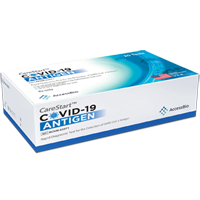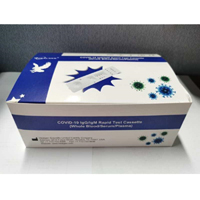A rapid antigen test is one of the two main tests used to detect the presence of the novel coronavirus. It provides a cheap and quick alternative to RT-PCR tests. It produces results in just 15 to 30 minutes. As a point-of-care test, it can be easily conducted without medical supervision in the comfort of one’s home. We have collated a step-by-step guide on how to perform it correctly. However, do note that the instructions on different test kits may vary slightly. So, make sure you read the instructions on your kit thoroughly before performing the test.
A few points to note
Before you take the test, abstain from food and drink for 30 minutes. In case you have already eaten, wait for half an hour. Since the rapid antigen test is nasopharyngeal, if you have had a nosebleed during the last 24 hours, prepare to swab the nostril that did not bleed or wait for a day. If you wear a nose piercing on one side, swab the nostril on the other side. If you wear a piercing on both nostrils, remove the piercing on the side that you plan to swab. In case you cannot swab your throat, swab both nostrils instead. The items in the test kit can only be used once. Do not share them with another person.
Step 1: Prepare your setting
Clear, disinfect and dry a flat surface on which you can conduct the test. Then, wash and sanitise your hands thoroughly. It is important to dry yourself completely before you get started. Next, remove the contents of the test kit. You will typically find the following items: (i) A swab (ii) An extraction tube (iii) An extraction tube holder (iv) An extraction buffer sachet (iv) A test strip (v) A waste bag.
Step 2: Set up the test
Open the test strip from the pack and place it on the surface. Make sure you carry out the test within 30 minutes of this step. Open the extraction buffer sachet, pour the fluid into the extraction tube and be careful not to spill any liquid. Close the tube and place it on the extraction tube holder.
Step 3: Collect the sample
Clear your nose before collecting the sample. Wash or sanitise your hands immediately afterwards. Then, remove the swab from the packet. Be careful not to touch the soft end. Then, rub the swab over your tonsils. Ensure that it does not touch your teeth, gums or tongue. If you had your tonsils removed, rub the region where your tonsils might have been. Repeat this step four to five times. As you remove it, make sure that it does not touch any part of your face. Then, insert the same swab into your nostril until you feel resistance. Roll it around five to ten times before removing it. You may feel slight discomfort during this process.
Step 4: Process the sample
Once you have your swab sample, open the nozzle cap on the extraction tube and place the soft end of the swab in the solution. Press it on the end of the tube while swirling it for 15-20 seconds. Ensure that the solution is mixed thoroughly. Close the nozzle cap of the tube tightly and gently squeeze the tube to place two drops of the solution on the specimen hole of the test strip. The strip should be left flat on the surface. Then wait for 15 to 30 minutes, depending on the instructions on your test kit.
Step 5: Read the result
Make sure you only read the result after the prescribed time limit. If you see only one line near the ‘C’ mark, this means that your result is negative. However, you should ideally confirm it with an RT-PCR test in the case of a negative result. Two lines on the test strip indicate a positive result. A positive result on a rapid antigen test should be treated as a true positive and does not need to be confirmed by an RT-PCR test. If no lines appear on the strip or only one line appears near the ‘T’ mark, it indicates an invalid result, and you will need to perform it once more. Finally, drop all the contents of the test into the waste bag and dispose of it.
The rapid antigen test is easy to perform and allows patients to isolate themselves quickly if they are found positive. However, it is important to note that the tests are not as sensitive as RT-PCR tests. While a positive result can be treated as a true positive, rapid antigen tests can sometimes result in false negatives. If you continue to experience COVID-like symptoms, test yourself with an RT-PCR test and consult your doctor.
Check out our Products
 Access Bio CareStart COVID-19 Antigen Rapid Diagnostic Test |
 Healgen COVID-19 IgG/IgM Rapid Test Cassette Kit |
References:
https://indianexpress.com/article/explained/how-rapid-antigen-test-detects-coronavirus-where-it-will-be-used-6460735/
https://www.nbcnews.com/science/science-news/what-antigen-testing-how-new-test-could-help-track-coronavirus-n1194586
Sign up for our Newsletter
A weekly newsletter with the most up to dateinformation about Covid 19.
Read our Privacy Policy for more information about our privacy practices.


